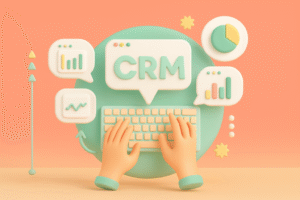TL;DR
Re-engaging lapsed donors helps you rebuild relationships, reduce acquisition costs, and increase donations from individuals who already support your cause. Here’s how you can win them back:
- Segment inactive supporters
- Research why they stopped giving
- Review donor profiles
- Choose the right communication channels
- Write meaningful appeals
- Follow up with empathy
- Track key metrics
You reach out to an old donor, someone who once gave generously, but now your emails sit unopened. Months have passed, maybe a year. They’ve gone quiet, and you start to wonder: what changed?
That’s what we call a lapsed donor, someone who hasn’t contributed in a significant period of time. This can often be 12 months or more, though the exact duration can vary depending on your organization’s fundraising cycle. What matters most is that the donor has gone inactive and needs to be re-engaged.
A donor who’s gone quiet represents more than lost revenue. It’s a missed connection with someone who once shared your purpose and trusted your work.
This guide will show you how lapsed donor reactivation works. You’ll learn how to identify lapsed supporters and how to write a lapsed donor appeal that encourages them to return.
Why donors lapse (and why it’s worth winning them back)
Across nonprofits, the average donor retention rate is only around 45%, meaning more than half of your donors don’t return the following year.

There are many reasons behind it, but some of the more common ones are:
- They forget or get busy and miss your usual giving cycle.
- They don’t see the impact of their last gift, so the urgency fades.
- They switched priorities, for example, new causes or life changes.
- They felt over-asked or under-thanked after their previous donation.
- Your emails feel irrelevant, generic, or go straight to spam.
Re-engaging them matters because acquiring a new donor costs up to five to seven times more than retaining an existing one. These are people who already believed in your mission once, so winning them back takes less effort than starting fresh.
With the right lapsed donor reactivation plan, you can reduce churn, rebuild loyalty, and strengthen long-term donor relationships.
How to identify and qualify your lapsed donors
Before you can plan your donor reactivation, you need to know exactly who your lapsed donors are.
Start by deciding what “lapsed” means for your organization. The standard definition is anyone who hasn’t donated in the last 12 months, though that can vary.
Some nonprofits use six months, while others use up to 18 months. What matters is being consistent so your team speaks the same language.
Once that’s set, review your donor data. Compare how many people gave last year versus this year. The difference gives you your donor attrition rate: the percentage of donors you lost. The opposite of that is your retention rate, or how many stayed active and donated again.
For example, if 1,000 people gave last year and 430 returned this year, your retention rate is 43%, and your attrition rate is 57%.
Pro tip: Some organizations use terms like LYBUNT and SYBUNT to describe lapsed groups.
- LYBUNT (Last Year But Unfortunately Not This) = donors who gave last year but not this year.
- SYBUNT (Some Year But Unfortunately Not This) = donors who gave in earlier years but not recently.
Knowing which type of lapsed donor you’re dealing with helps you plan targeted reactivation efforts, whether through a lapsed donor email or personalized outreach.
7 steps to regain your lapsed donors
Now that you know who your lapsed donor is, it is time to bring them back. You do not need a complex funnel. You need a clear plan and consistent follow-through.
Here is a simple roadmap for lapsed donor reactivation you can use right away:
1. Segment and prioritize your lapsed donors
Not every lapsed donor is the same. Sort them based on:
- Gift size (small, medium, major donors)
- Last donation date
- Campaign supported or channel used
This helps you focus on high-value supporters first, while designing lighter lapsed donor email campaigns for more minor or first-time donors. Prioritizing smartly saves effort and improves your odds of getting donations again.
2. Do your research
You can’t re-engage lapsed donors if you don’t know why they stopped giving. Start with a quick survey asking what made them pause and what might inspire them to return. Sometimes, a simple “Did we lose touch?” works best.
Then, analyze your data. Consider how they were acquired, how they were thanked, and how often they gave. Identify common patterns, such as donors who stopped after making a single gift versus those who disengaged after years of support.
These insights help you tailor your lapsed donor reactivation strategy to address specific reasons for drop-off, rather than a one-size-fits-all approach.
3. Review each donor profile
Once you’ve identified your priority segments, revisit every donor profile. Examine their giving history, preferred causes, and past communication style. If they supported a children’s program last year, mention that in your message.
A little personalization shows you remember them and value their earlier support, and that’s often the key to re-engagement.
4. Pick the right channel and tone
Each lapsed donor prefers a different touchpoint.
- Use email for broad outreach and simple updates.
- Use calls or handwritten notes for loyal or high-value donors.
- Keep your tone conversational and warm.
Remember, you’re not chasing money; you’re rebuilding a relationship with someone who once cared.
5. Write a meaningful lapsed donor appeal
No matter the mode of communication, whether it’s a lapsed donor email, a handwritten note, or a phone conversation, your message should follow a simple flow:
- Start with gratitude: Acknowledge their past contribution and its impact.
- Recognize the gap: Gently mention how long it’s been since their last gift.
- Show what’s new: Highlight what your organization has achieved since then.
- Invite them back: End with a clear, specific ask that shows how their gift will make a difference.
Example:
“Your support last year helped 20 families find safe housing. Since then, we’ve expanded our program to reach new communities, but 15 more families still need help. A gift of $50 can provide emergency shelter for one family this month. Will you join us again?”
This structure works in any format because it’s personal, heartfelt, and outcome-driven – the most reliable way to get donations from your lapsed supporters.
6. Follow up with empathy
Don’t stop after one message. Plan a short follow-up series – one reminder, one update, and one story-driven message.

If they still don’t respond, send a note that simply says you appreciate their past support and hope to reconnect later.
Gentle persistence keeps the door open without making donors feel pressured.
7. Track, test, and refine your approach
Tracking helps you identify what works and where to make improvements. Monitor metrics like:
- Open rates: demonstrate the effectiveness of your subject lines.
- Click-through rates: reveal which CTAs motivate donors.
- Replies or personal responses: measure engagement and trust.
- Renewed gifts or upgrades: the ultimate sign of success.
Most CRM tools and integrations can automatically track these. Reviewing them regularly helps refine your lapsed donor reactivation plan so you adjust your messaging with data-backed insights and build a steady path to getting donations again from past supporters.
6 tips to prevent donors from lapsing again
Winning back a lapsed donor takes effort, but keeping them active takes consistency.
Once you’ve re-engaged them, these steps help you prevent another lapse and maintain long-term relationships.
1. Maintain your donor database regularly
Many donors don’t stop giving intentionally; they simply lose touch. Perhaps their credit card has expired, their email address has changed, or your messages never reached them.
Scrub your donor database at least once a year to ensure all contact information is up to date. Automate reminders when payment methods are about to expire. A clean system ensures accurate outreach and a lower lapsed donor reactivation rate in the long run.
2. Make giving easy and convenient
Donors are more likely to continue giving when it’s quick and effortless.
- Offer multiple ways to give, such as online, via phone, or through checks.
- Enable recurring donations to encourage ongoing gifts.
- Keep your website and forms fast, mobile-friendly, and clutter-free.
- Use several payment gateways to prevent failed transactions.
A smooth, frustration-free experience helps donors complete their gifts with confidence and satisfaction.
3. Always say thank you
The simplest gesture makes the most significant difference. Send a thank-you message right after every donation, and make it personal. Mention what their gift accomplished or who it helped.
Follow up a few weeks later with an update or story showing impact. Gratitude builds emotional connection, which keeps donors loyal far longer than any automated campaign.
4. Share consistent updates
When donors don’t hear from you, they start to feel like their contribution didn’t matter, and that’s when they quietly stop giving. People want to see that their money created real change.
Below are a few simple ways you can use to keep donors informed and emotionally connected, so their support feels ongoing rather than one-time:
- Share short stories about who benefited from their gift.
- Post honest photos or quick videos from the field.
- Talk about challenges as well as wins – transparency builds trust.
- Mention specific outcomes (“Your gift helped us plant 500 trees this month”).
Genuine storytelling like this reveals to your donors, progress and emotions behind your work, rather than relying on polished PR-style language.
5. Ask for feedback and listen
Invite your donors to share why they give and what they’d like to see improved. Simple surveys or quick polls help you understand their motivations and prevent drop-offs caused by miscommunication or lack of relevance.
When people feel heard, they stay connected.
6. Highlight your donors publicly
People love to feel seen and appreciated. With their permission, feature donors on your social media, in e-newsletters, or during campaign updates. Share a short quote, a thank-you message, or a photo (if they’re comfortable with it).
Public recognition shows donors they’re part of a community that values generosity. It also inspires others to give, as seeing real people celebrated for their kindness encourages more participation than any campaign slogan ever could.
Your next move: turning lapsed donor reactivation into retention
Winning back a lapsed donor is only the first milestone. The real goal is to keep them connected and engaged long after they’ve returned.
Stay consistent with follow-ups, thoughtful thank-you notes, and short updates that show how their gift made an impact. When donors see their contribution in action, it strengthens their emotional connection to your cause.
Encourage continued involvement through small, meaningful gestures – an invite to your next event, a personalized update, or early access to new campaigns.
Retention doesn’t happen through grand gestures. It grows from steady communication, trust, and genuine appreciation: the foundation for lasting support and steady donations year after year.
FAQs on lapsed donor reactivation
What is considered a lapsed donor in a nonprofit?
A lapsed donor is someone who hasn’t made a donation for 12 months or more, though the exact period can vary based on your nonprofit’s fundraising cycle.
What to say to a lapsed donor?
When reaching out to a lapsed donor, thank them for their past support, share the impact of their previous gift, and include a clear link to a current donation campaign.
How do you write a powerful appeal letter?
A strong lapsed donor appeal starts with gratitude, tells a brief story of impact, and ends with a clear, emotional call to action that shows precisely how their renewed support will help.
How do you politely ask someone to reconsider a decision?
To ask a lapsed donor to reconsider, express understanding for their decision, restate the shared purpose you both care about, and gently highlight the ongoing need for their involvement.









